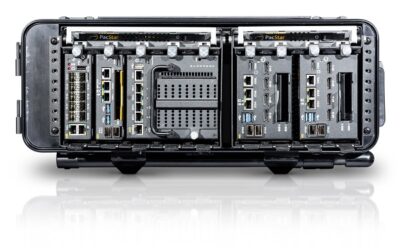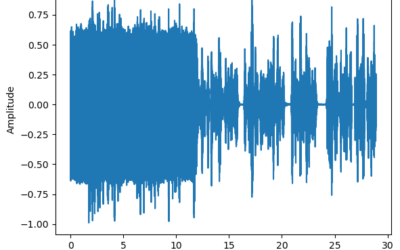Requirements of modern Special Operations Vehicles (SOV)
Ongoing coalition operations against the self-proclaimed Islamic State (IS) in Syria and northern Iraq are demonstrating the extended capabilities required of modern Special Operations Vehicles (SOV) as SOF rely on them to execute missions ranging from direct action (DA) and special reconnaissance (SR) to military assistance (MA) operations.
As Iraqi Special Operations Forces (ISOF) lead the assault to retake Mosul from IS, heavy emphasis is being placed on the use of up-armoured SOV, including blackened ex-DoD HMMWVs and M-ATVs, the latter having first been seen close to Al-Qarrayah AFB, some 60km south of Mosul, in June 2016.
Both vehicle types are being operated by ISOF Counter Terrorism Service units to provide tactical mobility across a vast battlefield as well as intimate fire support for DA missions. These vehicles will have proven invaluable as ISOF units begin the intricate task of clearing the city itself, with all the difficulties associated with conducting MOUT.
Elsewhere in Iraq and across the border in Syria, NATO- and Non-NATO SOF units continue to conduct MA operations to ‘Train, Advise and Assist’ indigenous security forces and combatant groups, heavily reliant on open-top SOV and Internally Transportable Vehicles (ITV), more suited to SR and DA operations across more open terrain. Additionally, many of these SOV are capable of being transported in the cargo holds of fixed- and rotary-wing aircraft, including the C-130 HERCULES and CH-47 CHINOOK – both staples of the SOF community.
Heavy Hitters
Over a decade of coalition operations in Iraq and Afghanistan, stretching back to 2001, has seen the international SOF community heavily reliant on heavier MRAP-style SOVs providing enhanced protection against IEDs and small arms fire from ambushes. Examples included the Thales Australia BUSHMASTER Protected Patrol Vehicles, up-armoured AM General HMMWVs, M-ATVs, and even open-top configurations such as the SC Group’s HMT family, initially used by UK and US SOF for optimal protection levels and situational awareness.
Heavily involved in ongoing counter-terrorism and COIN campaigns across West Africa as well as the Middle East, the French Special Forces Command received its first tranche of new VLFS in September 2016 under a €250 million contract signed with Renault Trucks Défense (RTD) in January 2016. A total of 23 heavy variants are scheduled to be delivered through 2017, according to the French MoD’s Financial Projects 2017 document. Vehicles will begin replacing legacy Panhard and ACMAT platforms conducting operations in the Sahel Region of Africa, where the 1er RPIMa and 13e RDP are conducting high tempo operations, including long range patrols, direct action and intelligence-gathering.
The French MoD was unable to confirm whether any of the initial tranche of heavy SOV have been forward deployed to Mali, where the SOF are operating as part of Operation “Barkhane,” whose Area of Interest also includes Mauritania, Burkina Faso, Niger, and Chad. Displayed for the first time at Eurosatory 2016, the heavy SOV is a variant of RTD’s SHERPA vehicle, which has a top speed of 110kph and can be armed with weapon systems including 5.56mm, 7.62mm, and .50-cal machine guns, automatic grenade launchers and anti-tank munitions.
Elsewhere, SC Group announced in September 2016 it would be equipping the New Zealand military with its new SOV-Mobility Heavy (SOV-MH) platform – a variant of the 4×4 HMT family – with deliveries scheduled to begin in the final quarter of 2017, according to company Marketing Director, Jamie Clarke.
The vehicle, which has been a stalwart mobility solution for NATO Special Forces over recent years, will be used for DA, SR and MA missions on expeditionary operations, although an element of the undisclosed number of vehicles will be maintained at home for training purposes.
Vehicles are destined for operation with the New Zealand Special Operations Command, which comprises the 1st New Zealand Special Air Service (NZSAS) Regiment. SC Group’s CEO, Nick Ames, explained: “Interoperability is an important element for the Special Forces community and commonality of spares and support is a key driver in maintaining relatively small fleets.”
Light Options
However, the SOV market continues to be driven by requirements for ITVs capable of being forward deployed by transport aircraft, thereby extending the operational reach of SOF teams. Such concepts of operation are being led by USSOCOM, which is in the process of receiving a variety of SOV ITVs for use with US Army Green Beret Operational Detachment Alpha teams and Ranger battalions, US Navy SEAL Teams, USAF Special Operations Squadrons, and MARSOC Raider units.
Vehicles include the Polaris Defense MRZR2 and MRZR4 4×4 ATVs, currently in the second year of a five year IDIQ contract with SOCOM. The contract also includes options for gas and diesel powered variants.
As Jed Leonard, Senior Manager at Polaris Defense, explained to Mönch at SOFIF 2016, MRZR-D4 vehicles are the most recent to have been ordered by USSOCOM and the Canadian Special Operations Forces Command (CANSOFCOM), the latter of which will receive their vehicles later in 2016. In August 2016, Public Services & Procurement Canada contracted Polaris Defense to deliver 36 MRZR-D utility task vehicles and 12 tactical trailers to, “…provide mission-critical ultralight, off-road mobility.”
“MRZR vehicles are H-47 (CHINOOK), H-53 and V-22 (OSPREY) air-transportable and can be configured a number of ways, including two-, four- and six-person. The turbo-charged diesel engine in the new MRZR-D has been engineered to meet the performance and physical specs of the original MRZR vehicles,” Leonard explained. “While many key features – like the dimensions, payload, towing, ground clearance, accessories, handling and other features – remain the same, Polaris incorporated feedback from the field in the new product, including updated occupant seating space, ergonomics and sightlines. The MRZR-D also provides increased auxiliary power and greater range, making it even more effective.”
The vehicles will be used by the Canadian Special Operations Regiment (CSOR) and Joint Task Force 2 (JTF-2), with CANSOFCOM variants including specific requirements such as infrared lighting and a 2t winch. The contract includes an option for the procurement of an additional 18 vehicles and six trailers if necessary. Deliveries will be made to Canadian Forces Base Petawawa in Edmonton, where CANSOFCOM was scheduled to begin evaluation in the final quarter of 2016. “The enhanced tactical mobility provided by Polaris Defense gives an advantage back to dismounted troops, allowing formations to move faster, carry more and significantly reduce combat fatigue,” Leonard added.
Elsewhere, Polaris Defense’s DAGOR (Deployable Advanced Ground Off Road) vehicle continues to be tested and evaluated by units from the Australian Special Operations Command, including 1st and 2nd Commando Regiments and the Special Air Service Regiment (SASR), while SOF from the UAE also trialled the platform alongside competitors that included NIMR Automotive’s AJBAN SOV. The UAE Special Operations Command has yet to define its requirements for a long range reconnaissance vehicle specifically roled for operations in the desert environment, defence sources confirmed to Mönch.
Unable to comment on the specific programme, Polaris Defense’s Director of International Business Development, Doug Malikowski, could only confirm: “We have successfully completed the desert trials for DAGOR in the UAE. Australia continues to test DAGOR and they now have initiated testing for the MRZR turbo diesel.”
An MRZR variant was also displayed on the Lithuanian SOF (LITHSOF) stand at the Global SOF Symposium in Vilnius in October 2016, although Polaris Defense sources were unable to comment on whether Special Purpose Service (YPT) or Vytautas The Great Jaeger Battalion (VDJB) were operational with the system.
Defining the SOV market holistically, John Olson, Vice President and General Manager at Polaris Defense, explained to MT “Our vehicles have been very popular with SOF for the past decade. Recently, we have seen a growing market for our family of ultralight vehicles as more conventional forces put greater emphasis and value on enhanced tactical mobility. DAGOR and MRZR are two vitally important elements to achieve this and are in the sweet spot from sizing and capability matching. [….] We continue to look at missionisation of the already modular MRZR and DAGOR platforms. By having an open and scalable architecture, not to mention power and payload capacity, our vehicles can be tailored for medical missions or casualty evacuation, weaponised, or outfitted for intelligence, surveillance and reconnaissance.”
General Dynamics Ordnance and Tactical Systems (GDOTS) continues to ramp up deliveries of the GMV1.1 to USSOCOM, according to Program Manager for Lightweight Tactical Vehicles, Sean Ridley. He explained to Mönch that GDOTS had already delivered 60 vehicles , based on its FLYER 72 ITV, to USSOCOM by October 2016, as part of an LRIP contract for an initial tranche of 92 SOV. The news follows a $560m deal agreed in 2013 for the supply of a total of 1,300 ITVs over the following seven years. Ridley added how production will be increased to FRIP in January: “The light tactical vehicle market is always going to have budget restraints but there is still a capability gap between all the services for a truly light mobility vehicle. Light tactical vehicles can go into restricted terrain and off-road with significant payload and that’s where we fit in with our vehicles. They are light, powerful and highly reconfigurable with an ability to get off and remain off the road.”
USSOCOM’s GMV1.1 is being made available in armoured and unarmoured configurations with the command opting for a variety of armaments, including Orbital ATK’s Mk44 BUSHMASTER II 30mm chain gun, which completed multiple test firings on the move in 2016. Baseline variants of the vehicle can be adjusted to carry up to seven operators, with other features including roof protection, optimised engine cooling technology, a rollbar and enhanced ammunition stowage capability. Vehicles will also be fitted with a USSOCOM-specific C4ISTAR suite. “The GMV1.1 is a highly mobile platform with a payload capacity over 5,000lbs with capability of being ‘guns up’ in under a minute after exiting the aircraft while also carrying a variety of armaments. An adaptable communications suite provides increasing operating range and provides the operator real-time access to critical information,” GDOTS explained.
The company is also pitching the baseline USSOCOM (minus C4ISTAR suite) to Italian SOF as part of a FMS. Units from the Italian Army’s SOF Command (COMFOSE), and Navy’s Operational Raiders Group (COMSUBIN) are expected to receive an undisclosed number of vehicles to be used for expeditionary CT and COIN operations in North Africa, following government legislation in August allowing them to operate without parliamentary consent.
Finally, RTD continues to develop its Light SOV variant for French SOF, with a total of 221 due to be delivered in 2018. However, the development process remains at an early stage with only a scale model having been exhibited at Eurosatory 2016.
Elsewhere, SC Group has made available a 6×6 extension kit for its 4×4 Light Reconnaissance Vehicle (LRV). Unveiled at the Defence Vehicle Dynamics event at Millbrook in September 2016, the LRV 600 will increase payload, mobility and range for SOF teams operating at reach, Clarke explained.
Close attention must be paid to more discreet and covert SOV also being heavily utilised across the contemporary operating environment, providing a mainstay of special operations capabilities. Sources associated with Battelle explained to Mönch how deliveries were underway for its latest contract with USSOCOM for Non Standard Commercial Vehicles. A $170 million contract was agreed in July for the upgrade of Toyota LAND CRUISER SUV models 76,78, 79, and 200, Toyota HILUX trucks and Ford RANGER trucks, used by special mission units to blend into local surroundings, especially in the Middle East, Asia, and Africa.
“SOF-peculiar modifications include increased ballistic protection, optimised mobility with improvements in suspension and braking technology as well as frame and body reinforcements and the integration of C4ISTAR technology suites, including infrared lighting and blackout mode,” a Battelle spokesperson confirmed.
Andrew White

























